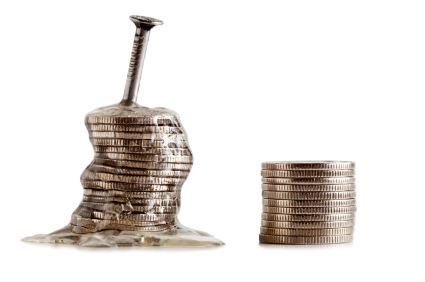 When you decide to purchase a home, one of the first decisions you will encounter as you are shopping for a mortgage is whether you should select a variable rate or a fixed rate mortgage. These both have their advantages, but the decision you make should be based on your plans for the future as well as your specific financial situation.
When you decide to purchase a home, one of the first decisions you will encounter as you are shopping for a mortgage is whether you should select a variable rate or a fixed rate mortgage. These both have their advantages, but the decision you make should be based on your plans for the future as well as your specific financial situation.
If you select a fixed rate mortgage, the payment and the mortgage rate will stay constant from month to month, for the duration of the term of the mortgage. If you select a variable mortgage, the rate and monthly cost can fluctuate when there are changes in the prime lending rate. The variable mortgage rate is always quoted as a range, with a plus or minus around a specific amount. While the rate of your mortgage may fluctuate, the actual relationship to the prime will stay consistent for the term of the mortgage.
Variable Mortgage Rates
The variable mortgage will fluctuate with the prime rate, which is also referred to as the market interest rate. This means that either your mortgage payments will change as the prime rate fluctuates or the interest on the payment will vary. The advantage of a variable mortgage rate is that over time, these rates have proven to be less expensive. With the constant fluctuation of the economy and the uncertainty that brings, you may be faced with a substantial increase in payments or interest from time to time, which could create a financial burden that you may not be able to afford.
Fixed Mortgage Rates
For many home buyers, a fixed mortgage is an appealing option because the payment will never change for the duration of the mortgage term. You are able to "set it and forget it," no matter what happens to the mortgage rates. This eases the stress of paying bills, as you will always know what is due from month to month. If you find that the difference between a variable and a fixed rate is substantial, it may not be worth paying a huge premium for the stability of a fixed rate mortgage. This is a decision that should be based on your own financial situation.
Which Is More Popular?
When it comes to fixed and variable rate mortgages, there is a clear winner in the race to be the more popular option. In general, about 60 per cent of the total mortgages in Canada are fixed rates, while the remaining percentage are variable rates. Usually, mortgage holders who have some knowledge of the economy and who are more comfortable with the fluctuations of the market opt for variable rates, while those who prefer the stability of knowing how much they will be paying prefer fixed rates.
Comparing the Variable and Fixed Mortgage Rates
It is often helpful for individuals to consider the difference in the variable and fixed rate mortgages as an insurance against lending rates increasing. It is suggested that you consider locking in a fixed rate mortgage when the interest levels are low, and are not speculated to fall any more. This is mainly due to the fact that variable rates are either going to increase, in the best case scenario, or stay the same. If you are expecting a reduction in interest rates, then the variable rate might be the smarter option, as you will likely reap the advantages of paying a lower interest charge. If the payment is extremely different for variable and fixed rate mortgages, the extra insurance is likely not worth the hefty premium that is required to lock in a fixed rate mortgage.
Driving Factors of Variable and Fixed Rate Mortgages
In most cases, the rates of fixed mortgages will follow the patterns of the Canada Bond Yields, as well as a spread, where the bond yields can be impacted by economic factors including inflation, export and unemployment.
While variable mortgage rates are impacted by the same economic factors, they are also driven by changes or movements with the current prime lending rate. This is the rate that is provided by banks to what they consider their top, credit-worthy patrons. In most cases, a variable mortgage rate will be written as prime plus or minus the percentage of premium or discount. For example, a common variable rate is quoted as prime -0.8 per cent. Therefore, when the prime rate is situated at five per cent, the mortgage holder will pay 4.2 per cent in interest, or 5 per cent minus 0.8 per cent.
The prime rate is dependent on the state of the current economy, which is determined by the economic factors listed earlier, like inflation and unemployment. The combinations of manufacturing, export and unemployment all determine the actual inflation rate. When the inflation rate is high, then the Bank of Canada will, of course, make increases to the prime rate in order to make borrowing money much more expensive. When the inflation is lower, the prime rate will be decreased in order to stimulate and improve the economy as well the appeal for borrowing.
The mortgage rate that you choose is ultimately based on your specific financial needs. If you need the stability of knowing what your payment will be from month to month, a fixed rate mortgage is the right choice. If you have a bit of flexibility, you may want to consider the benefits of a variable rate mortgage, as they have been proven to save money when considered long-term.
Interested in learning about housing trends?
- Read: Toronto Housing Trends
- Read: Alberta Housing Trends
- Read: Calgary Housing Trends




